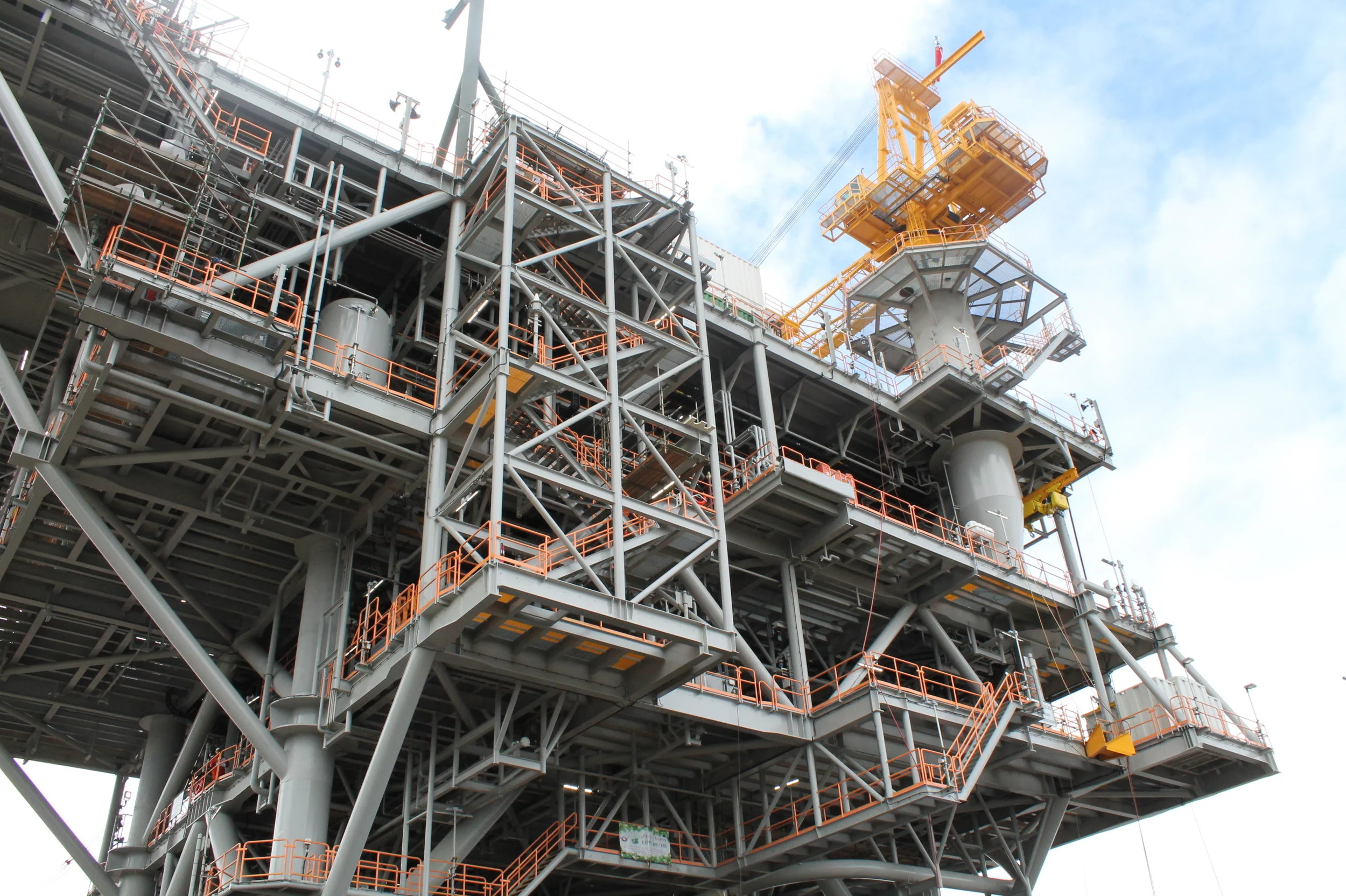Construction of the much-anticipated Juniper platform has been completed and the topside has been loaded out from the Trinidad Offshore Fabricators (TOFCO) facility in La Brea, for installation in its permanent location off Trinidad’s southeast coast. The jacket for the platform, which was originally supposed to be constructed in La Brea but was moved to a yard in the United States (US) after early project delays, has also been transported back to Trinidad ready for installation.
Juniper is BP’s 14th offshore production facility in Trinidad and Tobago and the sixth to be constructed incountry. It has been hailed as a major achievement for the local fabrication industry and local content in general. At 5,670 tonnes, this platform is the largest ever built in the country.
The fabrication work on the topside was completed by TOFCO, which is located in the La Brea Industrial Development Company Limited (LABIDCO) Estate in La Brea. Juniper is now the most recent addition to TOFCO’s list of completed platforms that are currently in use. In the past, TOFCO has worked on the Cannonball, Cashima, Mango, Savonette, Serrette, Oilbird, Poinsettia and Angostura platforms and related infrastructure. TOFCO was awarded the contract for the fabrication of the Juniper jacket, topsides and piles in September 2014.
The successful completion of the Juniper project comes at an opportune time for the local industry, which is in dire need of some positive news, given the continued shortfalls in gas production and the continued low oil and gas price environment. Despite the early challenges with labour disputes and shipping delays, the platform fabrication part of the project is now complete. Focus is now on the installation of the facility offshore, the completion of the drilling campaign, the installation of the subsea infrastructure and all of the hook-ups.
Juniper is bpTT’s first subsea field development in Trinidad and Tobago. The Juniper facility will take gas from the Corallita and Lantana fields, located 50 miles off the southeast coast of Trinidad in water depth of approximately 360 feet. The development will include five subsea wells, and promises a production capacity of approximately 590 million standard cubic feet per day (MMSCFD). Gas from Juniper will flow to the Mahogany B hub via a new 10-kilometre flowline.
TOFCO officials have told EnergyNow that the successful delivery of the project can be attributed to their investment in building competency amongst their workforce and fostering a strong safety culture. Most of the company’s labour force comes from the surrounding communities, which include some of the most economically depressed areas in the country.
With this project completed, the challenge for TOFCO is to find additional work to maintain its labour force and to find opportunities for its experienced subcontractors. This may not be an easy challenge for the company, which has already seen some local platform developments that it may have hoped to win – such as the Sercan project – instead go to rival yards in the US. The global downturn in the industry has meant that many fabrication yards around the world are competing for less business, and rates have been dropped accordingly.
While bpTT has indicated its intention for development of the Angelin project, Regional President Norman Christie has indicated it “will not be sanctioned unless policy decisions properly recognise the context within which we are operating”. Even if the project is sanctioned, there is no guarantee that the platform fabrication will take place in La Brea. Being able to deliver a competitively priced project on time and safely is the only guarantee of future work.

